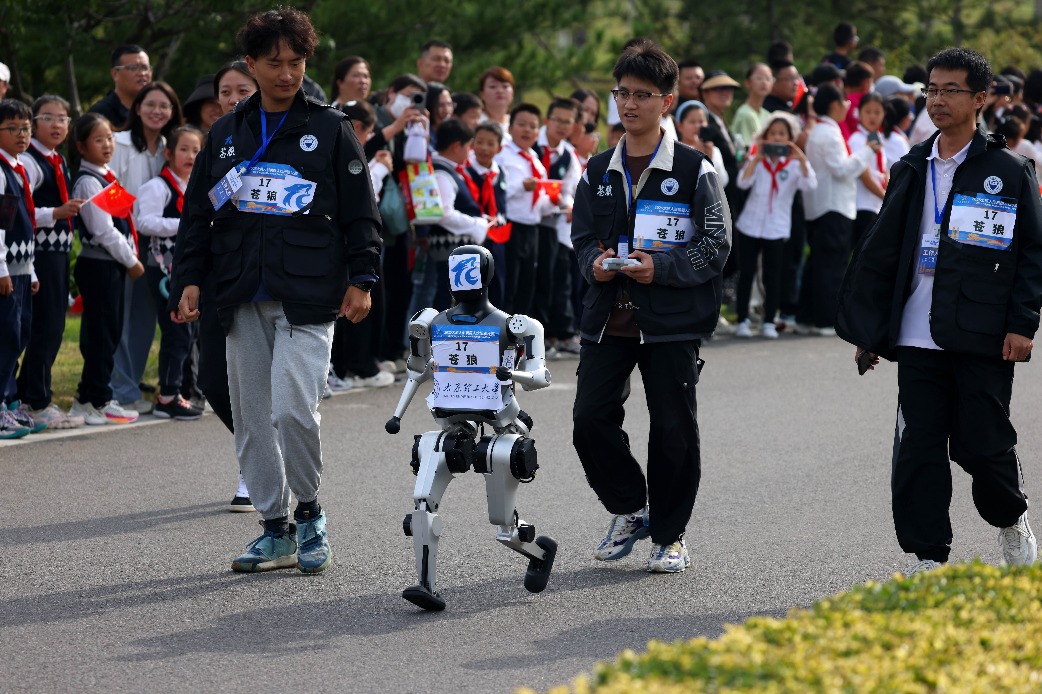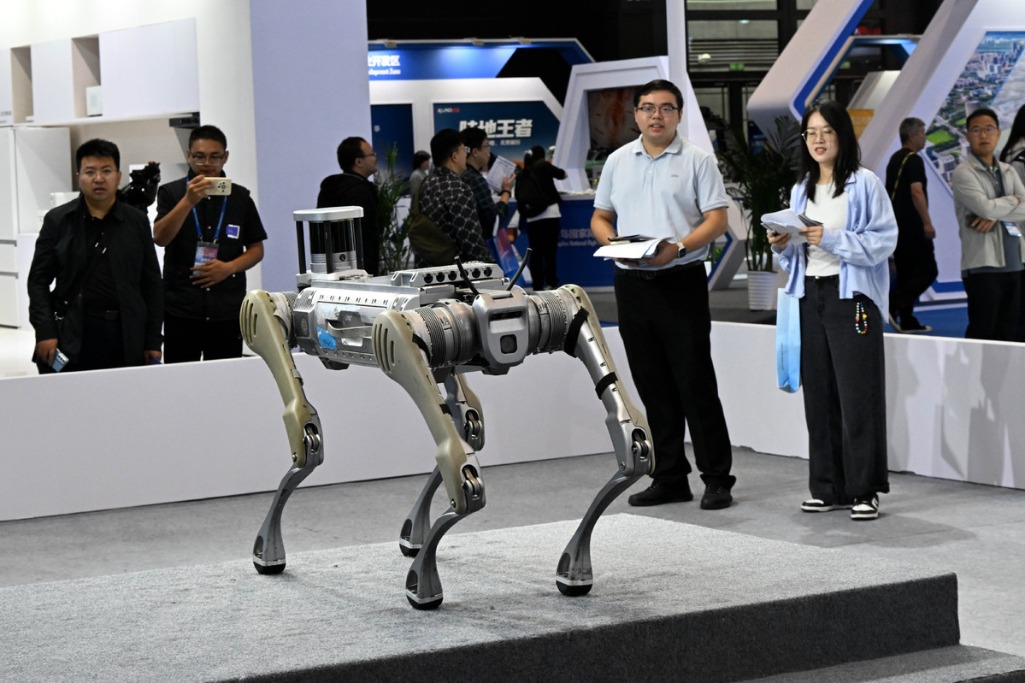NEV tech to facilitate robot, aircraft sectors


Intelligent vehicles, low-altitude air travel, and embodied robotics are major applications for artificial intelligence, and the integration of their core technologies is paving the way for a new industrial ecosystem.
"It is not merely an overlap of industries; it is the deep integration of technology, supply chains, and application scenarios," said Zhang Yongwei, president of China EV100, a Beijing-based auto industry think tank.
Zhang made the remarks at the Integration-driven Intelligent Industry Development Conference on Wednesday in Wuhan, Central China's Hubei province.
He said these sectors are now part of an AI-powered terminal industry chain, with supply chain overlap exceeding 60 percent — some estimates put it at as high as 70 percent.
Key components, such as electric drivetrains and communication systems from the automotive sector, are applicable to both robotics and low-altitude aircraft.
Zhao Mingguo, a researcher at Tsinghua University's Department of Automation, said this "commonality" is evident in technological advancements.
Zhao's team, which has spent more than 20 years developing bipedal robots, recently won the championship of a soccer match at the 2025 World Humanoid Robot Games using their proprietary end-to-end reinforcement learning technology.
"While robots playing soccer may seem like a novelty, this platform tests the full spectrum of embodied intelligence, from perception to decision-making and motion control.
"These technologies are closely linked to the underlying logic of intelligent driving systems in vehicles," said Zhao.
The integrated development of these sectors is also expected to drive down costs, which hinder the development of robotics and low-altitude travel, especially through the sharing of supply chains.
"The primary issue for robotics and low-altitude travel has always been high costs. This is due to a lack of integration between their supply chains and the more mature automotive industry," said Zhang.
The automotive supply chain — encompassing perception, computation, and execution technologies — can now be leveraged by robotics and low-altitude aircraft.
For instance, electric vehicle batteries, which were designed for cars, are now being adapted to power low-altitude aircraft and robots.
Companies such as CATL and BYD have begun to expand their battery offerings to meet the needs of emerging sectors.
This shift is evident in the work of some leading companies. Horizon Robotics, a key player in AI and automotive chips, has used intelligent vehicles as a proving ground for robotics.
Lyu Peng, the Beijing-based company's vice-president, noted that the company's Journey series chips have been installed in over 200 vehicle models, with more than 10 million units shipped.
Meanwhile, their "Sweet Potato "robotic platform, built on the same Brain Processing Unit architecture, has found applications in vacuum cleaners and industrial arms.
"By optimizing the computational power and algorithms of intelligent vehicles, we're able to enhance robot performance, enabling smoother motion control and increased safety," said Lyu.
The low-altitude economy, which encompasses electric flying vehicles and air taxis, is also benefiting from the convergence of automotive and AI technologies.
Professor Qu Xiaobo of Tsinghua University and his collaborators have proposed a "light infrastructure, heavy payload" model for low-altitude transportation.
Unlike traditional helicopters, which are expensive, electric flying cars powered by distributed electric propulsion promise to drastically reduce costs.
By leveraging automotive supply chains, these vehicles could be produced at a fraction of the current price, dropping from millions of yuan to an estimated 200,000 yuan ($27,400), said Qu.
A case in point is Sichuan province-based Aerofugia, which is developing a four-to-six-seat electric flying vehicle with a range of 200 kilometers and noise levels below 40 decibels.
The model is undergoing manned airworthiness certification, with plans to begin commercial operations by 2026.
Among other things, it can be charged via the same network as electric vehicles, said Xiao Qianzhi, Aerofugia's vice-president.
Liu Jiangbo, deputy director of the Technology Center at JAC Group, is convinced that the integration and sharing of technologies from automotive, robotics, and low-altitude travel is creating new opportunities for collaboration across industries.
"We are working with leading universities, robotics companies, and low-altitude firms to share key technologies like energy storage, communication, and AI models. Our goal is to extend the automotive supply chain into these new sectors," Liu said.
Zhang at China EV100 believes that these sectors will become driving forces of China's exports, with their combined exports valued at a trillion-yuan level, and integrated development is key to unlocking their full potential.
"Integrated intelligence is the next frontier for the new energy sector. As supply chains mature and ecosystems expand, it will become a competitive edge for China on the global stage," Zhang said.
lifusheng@chinadaily.com.cn



































